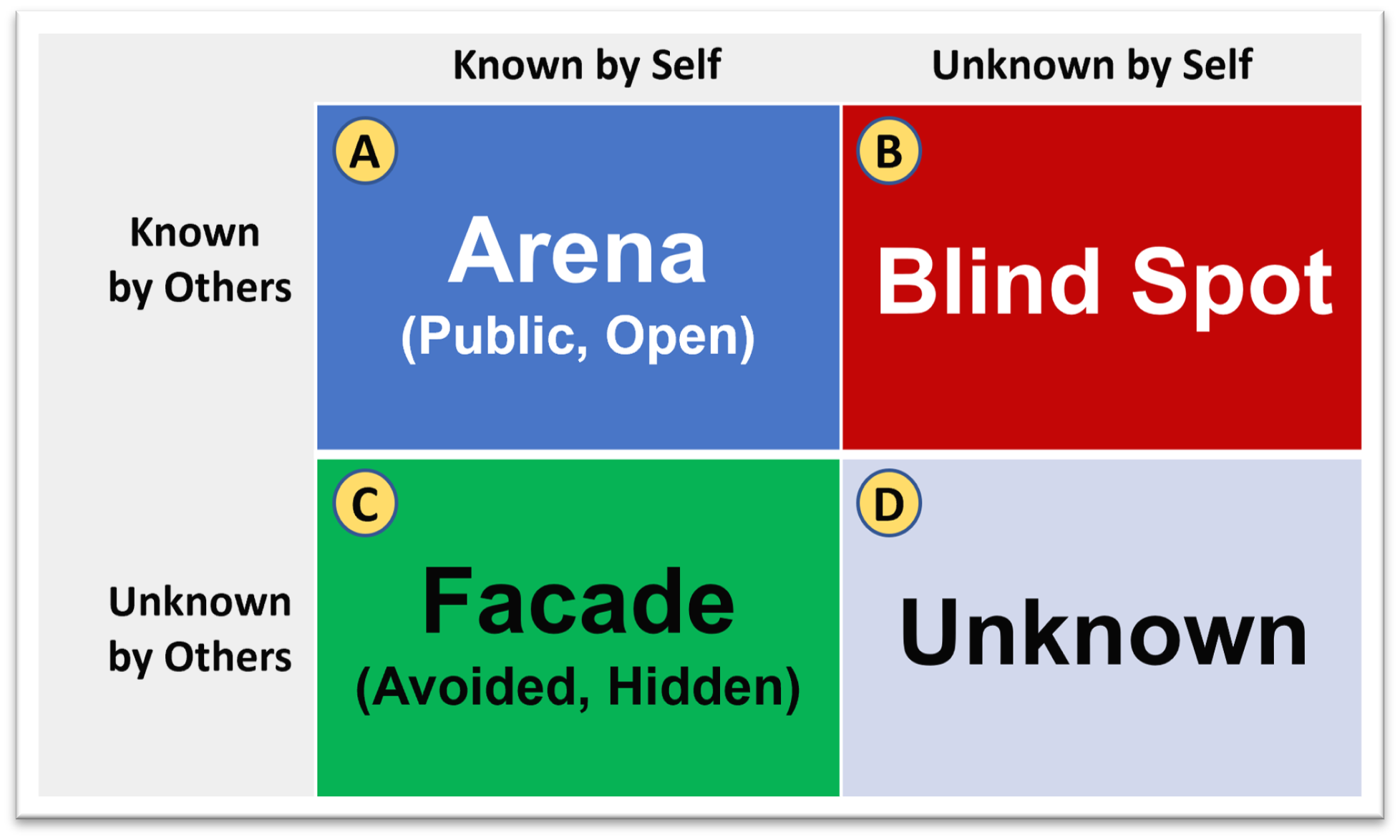Appearance
JoHari Window
- Subject
- People / Team growing
- Participants
- The entire agile team / project sponsor
- Facilitator
- Agile Coach / Agile Master

Summary
Developed in 1955 by the American social psychologists Joseph Luft and Harry Ingham. The first names of these two were used for the name of the method.
Definition
This method demonstrates that "self-perception" and "external perception" do not correspond but are areas of behavior in which others are inadvertently communicating about oneself, while large areas of your own perception remains hidden. (Stangl, 2020). The Johari window is represented by a quadrant with four main areas.
Area A comprises the part of common knowledge, those aspects of our behavior that are known to ourselves and other members of the group. Here, we are more or less the 'public person'.
Area B describes the 'blind spot', the part of our behavior that we ourselves do not perceive very much, but which is quite clear to other members of the group: Thoughtless and unconscious habits and behaviors, prejudices, likes and dislikes.
Area C comprises the area of restraint, for example those aspects of our thinking and acting that we consciously hide from others - the 'secret desires', the 'sensitive areas', the so-called 'private person'.
Area D comprises the unconscious area that is not directly accessible to us or to others. However, a psychologist may be able to access them. Hidden talents and untapped talents are examples of this.
Motivation
Quadrants B and D are especially relevant for feedback. Feedback in the sense of a comparison of self-image and external image can, provided that the feedback is accepted and reflected constructively, reduce the "unconscious" area. At the same time, the "open" area is extended. This can lead to a positive change in relationships with other people, as the effect, i.e. the external image, increases the intentions, i.e. corresponds to the self-image.
Results
You get a more complete view of your personality and understand the way others perceive you.
Benefit
You get an awareness how you affect on others and have the chance to discover some of your hidden talents.
Procedure
A participant selects a set number of adjectives from a list they feel best describe them. From the same set of adjectives, the participant then selects the characteristics that best describe another person. You can do this simple exercise in a 30-minute one-on-one meeting and it can lead to very constructive conversations and achievements. To get a more complete picture the external perception should be gathered by various people.
Tools
Whiteboard/Flipchart
Hints
You should setup a stage in a protected space where all participants feel comfortable and secure.
See also
The Johari Window: A Simple Exercise to Improve Your One-on-One Meetings